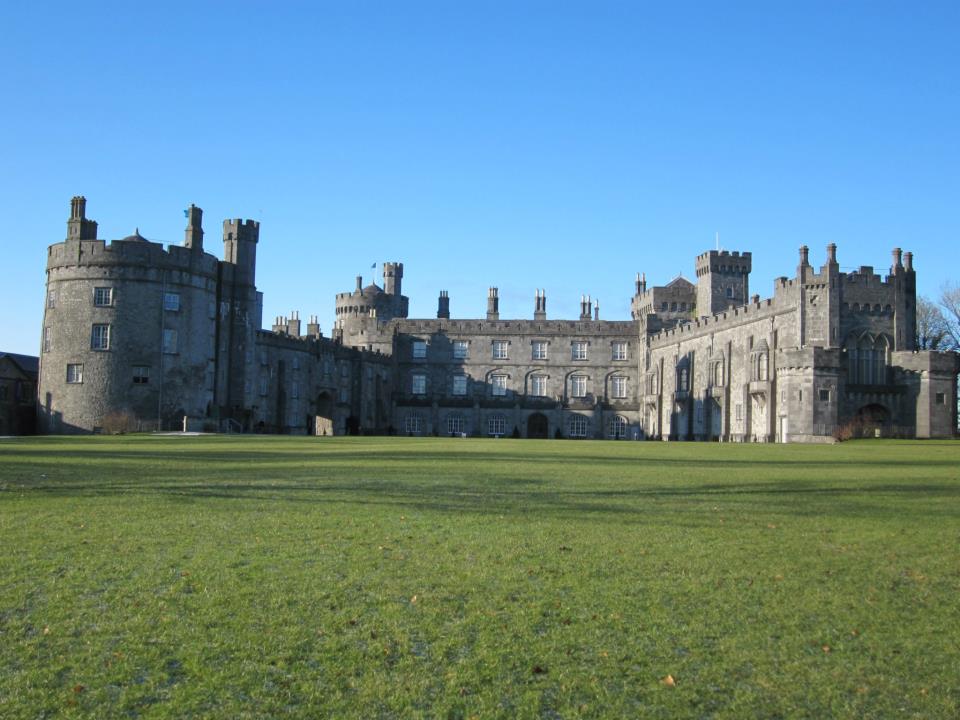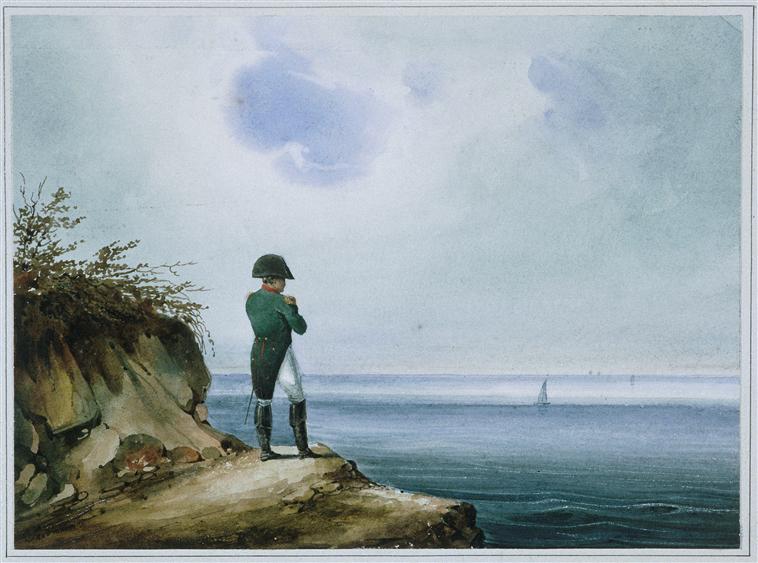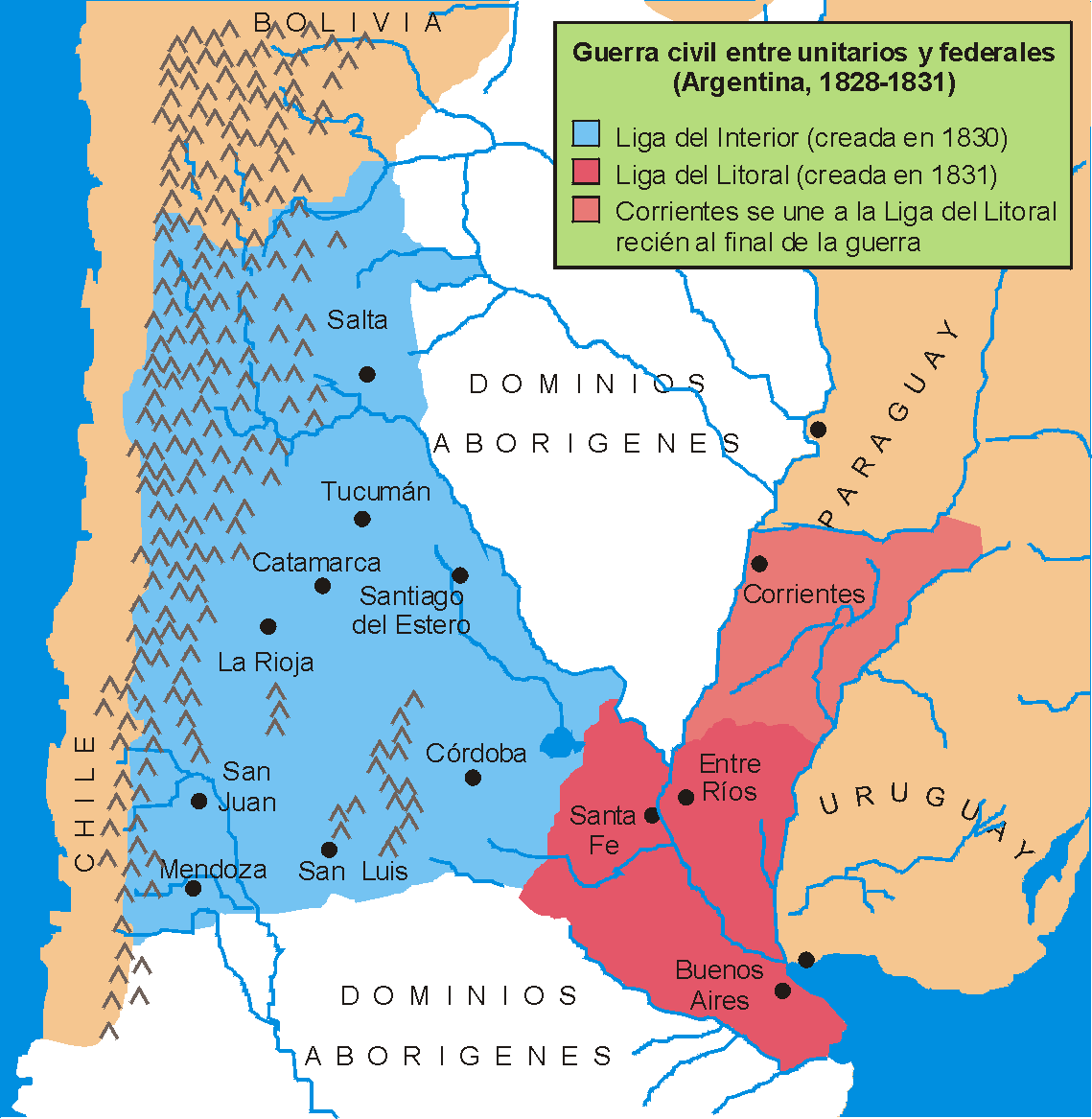|
Domingo Cullen
Domingo Cullen (1791 – 21 June 1839) was the governor of province of Santa Fe, Argentina during 1838. Biography Cullen was born in Tenerife, Canary Islands, but moved to Argentina in the 1820s after establishing commercial activities (linked with fluvial trade) in the area. He met Santa Fe's ''caudillo'' Estanislao López when serving as a deputy of the Cabildo of Montevideo. After being involved in activism related to the independence of Uruguay and the resistance against Brazil (see Cisplatine War), he returned to Santa Fe, settled in a ranch, and married Joaquina Rodríguez del Fresno, the young widow of Pedro Aldao and sister-in-law of López. In 1828 he became a counselor of López, and his Minister of Government in 1833. At the time of López's death on 15 June 1838, Cullen was in Buenos Aires as representative of Santa Fe, trying to find a peaceful solution to the ongoing French blockade of the port (caused by a law of 1821 that obligated resident foreign citizens of th ... [...More Info...] [...Related Items...] OR: [Wikipedia] [Google] [Baidu] |
Canary Islands
The Canary Islands (; es, Canarias, ), also known informally as the Canaries, are a Spanish autonomous community and archipelago in the Atlantic Ocean, in Macaronesia. At their closest point to the African mainland, they are west of Morocco. They are the southernmost of the autonomous communities of Spain. The islands have a population of 2.2 million people and they are the most populous special territory of the European Union. The seven main islands are (from largest to smallest in area) Tenerife, Fuerteventura, Gran Canaria, Lanzarote, La Palma, La Gomera, and El Hierro. The archipelago includes many smaller islands and islets, including La Graciosa, Alegranza, Isla de Lobos, Montaña Clara, Roque del Oeste, and Roque del Este. It also includes a number of rocks, including those of Salmor, Fasnia, Bonanza, Garachico, and Anaga. In ancient times, the island chain was often referred to as "the Fortunate Isles". The Canary Islands are the southernmost region of Spain, and ... [...More Info...] [...Related Items...] OR: [Wikipedia] [Google] [Baidu] |
Buenos Aires
Buenos Aires ( or ; ), officially the Autonomous City of Buenos Aires ( es, link=no, Ciudad Autónoma de Buenos Aires), is the capital and primate city of Argentina. The city is located on the western shore of the Río de la Plata, on South America's southeastern coast. "Buenos Aires" can be translated as "fair winds" or "good airs", but the former was the meaning intended by the founders in the 16th century, by the use of the original name "Real de Nuestra Señora Santa María del Buen Ayre", named after the Madonna of Bonaria in Sardinia, Italy. Buenos Aires is classified as an alpha global city, according to the Globalization and World Cities Research Network (GaWC) 2020 ranking. The city of Buenos Aires is neither part of Buenos Aires Province nor the Province's capital; rather, it is an autonomous district. In 1880, after decades of political infighting, Buenos Aires was federalized and removed from Buenos Aires Province. The city limits were enlarged to include t ... [...More Info...] [...Related Items...] OR: [Wikipedia] [Google] [Baidu] |
Kilkenny
Kilkenny (). is a city in County Kilkenny, Ireland. It is located in the South-East Region and in the province of Leinster. It is built on both banks of the River Nore. The 2016 census gave the total population of Kilkenny as 26,512. Kilkenny is a tourist destination, and its environs include historic buildings such as Kilkenny Castle, St Canice's Cathedral and round tower, Rothe House, Shee Alms House, Black Abbey, St. Mary's Cathedral, Kilkenny Town Hall, St. Francis Abbey, Grace's Castle, and St. John's Priory. Kilkenny is also known for its craft and design workshops, the Watergate Theatre, public gardens and museums. Annual events include Kilkenny Arts Festival, the Cat Laughs comedy festival and music at the Kilkenny Roots Festival. Kilkenny began with an early 6th-century ecclesiastical foundation within the Kingdom of Ossory. Following the Norman invasion of Ireland, Kilkenny Castle and a series of walls were built to protect the burghers of what became a Norman ... [...More Info...] [...Related Items...] OR: [Wikipedia] [Google] [Baidu] |
Irish People
The Irish ( ga, Muintir na hÉireann or ''Na hÉireannaigh'') are an ethnic group and nation native to the island of Ireland, who share a common history and culture. There have been humans in Ireland for about 33,000 years, and it has been continually inhabited for more than 10,000 years (see Prehistoric Ireland). For most of Ireland's recorded history, the Irish have been primarily a Gaelic people (see Gaelic Ireland). From the 9th century, small numbers of Vikings settled in Ireland, becoming the Norse-Gaels. Anglo-Normans also conquered parts of Ireland in the 12th century, while England's 16th/17th century conquest and colonisation of Ireland brought many English and Lowland Scots to parts of the island, especially the north. Today, Ireland is made up of the Republic of Ireland (officially called Ireland) and Northern Ireland (a part of the United Kingdom). The people of Northern Ireland hold various national identities including British, Irish, Northern Irish or som ... [...More Info...] [...Related Items...] OR: [Wikipedia] [Google] [Baidu] |
Juan Lavalle
Juan Galo Lavalle (17 October 1797 – 9 October 1841) was an Argentine military and political figure. Biography Lavalle was born in Buenos Aires to María Mercedes González Bordallo and Manuel José Lavalle, general accountant of rents and tobacco for the Viceroyalty of the Río de la Plata. In 1799, the family moved to Santiago de Chile, but returned to Buenos Aires in 1807. In 1812 Lavalle joined the Regiment of mounted grenadiers as a cadet. By 1813 he reached the grade of lieutenant and moved to the army, which under orders of Carlos María de Alvear besieged Montevideo. Lavalle fought against José Gervasio Artigas in 1815 and in the Battle of Guayabos under the command of Manuel Dorrego. In 1816 Lavalle moved to Mendoza to join the ''Army of the Andes'' of the " liberator" José de San Martín and fought in Chacabuco and the Maipú in Chile. He continued along with San Martín on his way to Peru and Ecuador and took part in the battles of Pichincha and the Riobamb ... [...More Info...] [...Related Items...] OR: [Wikipedia] [Google] [Baidu] |
San Nicolás De Los Arroyos
San Nicolás de los Arroyos (usually shortened to ''San Nicolás'') is a city in the province of Buenos Aires, Argentina, on the western shore of the Paraná River, from Rosario. It has about 133,000 inhabitants (). It is the administrative seat of the '' partido'' of the same name. It is sometimes called ''Ciudad de María'' (City of Mary) due to a series of Marian apparitions that led to the erection of the Sanctuary in honor of Our Lady of the Rosary of San Nicolás that began during the 1980s and were approved by Bishop Cardelli of the diocese as "worthy of belief" in 2016. History San Nicolás de los Arroyos was founded on 14 April 1748 by Rafael de Aguiar, who gave it its name to honour Saint Nicholas of Bari, now patron of the city. The closeness to the border between Buenos Aires and two other large provinces made the city a natural stage for the struggle between federalist and Unitarians forces in mid-19th century. The agreement between thirteen provinces on 31 May 1 ... [...More Info...] [...Related Items...] OR: [Wikipedia] [Google] [Baidu] |
Arroyo Del Medio
The Arroyo del Medio ( Spanish, lit. "Middle Creek" or "Middle Stream") is a small river of Argentina, located on (and serving as) the border between the provinces of Buenos Aires and Santa Fe. Its catchment basin comprises about . The Arroyo empties into the Paraná River The Paraná River ( es, Río Paraná, links=no , pt, Rio Paraná, gn, Ysyry Parana) is a river in south-central South America, running through Brazil, Paraguay, and Argentina for some ."Parana River". Encyclopædia Britannica. Encyclopædia Br ... at the city of San Nicolás de los Arroyos, Buenos Aires, opposite the Constitución Department in Santa Fe. Rivers of Buenos Aires Province Rivers of Santa Fe Province Tributaries of the Paraná River Rivers of Argentina {{Argentina-river-stub ... [...More Info...] [...Related Items...] OR: [Wikipedia] [Google] [Baidu] |
Santiago Del Estero Province
Santiago del Estero (), also known simply as Santiago, is a province in the north of Argentina. Neighboring provinces, clockwise from the north, are Salta, Chaco, Santa Fe, Córdoba, Catamarca and Tucumán. History The indigenous inhabitants of these lands were the Juríes-Tonocotés, Sanavirones and other tribes. Santiago del Estero is still home to about 100,000 speakers of the local variety of Quechua, making this the southernmost outpost of the language of the Incas. When the language reached the area, and how, remains unclear—it may even have arrived only with the native troops that accompanied the first Spanish expeditions. Diego de Rojas first reached this land in 1542. Francisco de Aguirre founded the city of Santiago del Estero in 1553 as the northernmost city founded by Spanish conquistadores coming from the Pacific Ocean. Santiago then passed under different governments, from the intendency of Tucumán to the ''Audiencia de Charcas'', then again to Tucumá ... [...More Info...] [...Related Items...] OR: [Wikipedia] [Google] [Baidu] |
Exile
Exile is primarily penal expulsion from one's native country, and secondarily expatriation or prolonged absence from one's homeland under either the compulsion of circumstance or the rigors of some high purpose. Usually persons and peoples suffer exile, but sometimes social entities like institutions (e.g. the papacy or a government) are forced from their homeland. In Roman law, ''exsilium'' denoted both voluntary exile and banishment as a capital punishment alternative to death. Deportation was forced exile, and entailed the lifelong loss of citizenship and property. Relegation was a milder form of deportation, which preserved the subject's citizenship and property. The term diaspora describes group exile, both voluntary and forced. "Government in exile" describes a government of a country that has relocated and argues its legitimacy from outside that country. Voluntary exile is often depicted as a form of protest by the person who claims it, to avoid persecution and prosecu ... [...More Info...] [...Related Items...] OR: [Wikipedia] [Google] [Baidu] |
Entre Ríos Province
Entre Ríos (, "Between Rivers") is a central province of Argentina, located in the Mesopotamia region. It borders the provinces of Buenos Aires (south), Corrientes (north) and Santa Fe (west), and Uruguay in the east. Its capital is Paraná (250,000 inhabitants), which lies on the Paraná River, opposite the city of Santa Fe. Together with Córdoba and Santa Fe, since 1999, the province is part of the economic-political association known as the Center Region. History The first inhabitants of the area that is now Entre Ríos were the Charrúa and Chaná who each occupied separate parts of the region. Spaniards entered in 1520, when Rodríguez Serrano ventured up the Uruguay River searching for the Pacific Ocean. The first permanent Spanish settlement was erected in the current La Paz Department at the end of the 16th century. As governor of Asunción first and then of Buenos Aires, Hernandarias conducted expeditions to Entre Ríos unexplored lands. Juan de Garay, af ... [...More Info...] [...Related Items...] OR: [Wikipedia] [Google] [Baidu] |
Pascual Echagüe
Pascual Echagüe, (16 May 1797 – 2 June 1867) was an Argentine soldier and politician. He served as Governor of Entre Ríos and Santa Fe provinces and Minister of War and Navy during the governments of Urquiza and Derqui. He participated in the Argentine Civil Wars and the Uruguayan Civil War. Minister in Santa Fe Echagüe was born in Santa Fe in 1797 and received a doctorate in theology in 1818 from the National University of Córdoba. He was a teacher for a short time, later secretary and afterward provincial minister to Governor Estanislao López. He represented his province at the signing of the treaties with Entre Ríos (1823), and at the Pacto Federal in January 1831. He served several times as interim governor, and joined the army with the honorary rank of lieutenant colonel. He took part in the 1829 campaign against the Unitarian Juan Lavalle, fighting at the Battle of Márquez Bridge. He went with the army against Córdoba Province, and was in charge of th ... [...More Info...] [...Related Items...] OR: [Wikipedia] [Google] [Baidu] |
Federal Pact
The Federal Pact ( es, Pacto Federal) was a treaty first signed by the Argentine provinces of Buenos Aires, Entre Ríos and Santa Fe on 4 January 1831, for which a Federal military alliance was created to confront the Unitarian League. Other provinces would later join the treaty. Background After the demise of the Liga Federal, led and inspired by José Gervasio Artigas, the first meeting between the Provinces of Santa Fe, Entre Ríos, Corrientes and Buenos Aires, with the purpose of an alliance, took place on July 20, 1830, in Santa Fe. It had the following representatives: Domingo Cullen for Santa Fe, Diego Miranda for Entre Ríos, Pedro Ferré for Corrientes and José María Roxas y Patrón for Buenos Aires. The treaty was to be written by Ferré and Roxas. Ferré insisted in the organization of the state at the national (river navigability, provincial powers, national organization) and international level ( foreign commerce, customs taxes). Roxas y Patrón opposed to such id ... [...More Info...] [...Related Items...] OR: [Wikipedia] [Google] [Baidu] |



